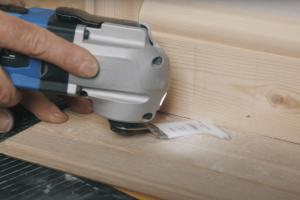Mastering the Art of Cutting Skirting Boards: A Comprehensive Guide

-
Quick Links:
- Introduction
- Understanding Skirting Boards
- Tools You Need
- Step-by-Step Guide to Cutting Skirting Boards
- Common Mistakes to Avoid
- Expert Tips and Tricks
- Case Studies
- Conclusion
- FAQs
Introduction
Cutting skirting boards can seem daunting, especially for those new to DIY projects. However, with the right tools, techniques, and a bit of practice, anyone can achieve professional-looking results. In this comprehensive guide, we will walk you through everything you need to know about cutting skirting boards, from understanding the materials to mastering the cutting techniques.
Understanding Skirting Boards
Skirting boards, also known as baseboards, are the finishing touches at the bottom of walls. They serve both aesthetic and practical purposes, including:
- Protecting walls from scuffs and damage
- Concealing gaps between the wall and floor
- Enhancing the overall look of a room
They come in various styles, materials, and sizes, making it essential to choose the right type for your project.
Tools You Need
To cut skirting boards effectively, you'll require specific tools. Here’s a list of essentials:
- Measuring Tape: For accurate measurements.
- Pencil: For marking cuts.
- Chop Saw or Miter Saw: For precise angle cuts.
- Hand Saw: In case power tools are not available.
- Level: To ensure skirting boards are straight.
- Clamps: To hold pieces in place while cutting.
- Safety Gear: Goggles and gloves for protection.
Step-by-Step Guide to Cutting Skirting Boards
Follow these steps to achieve a clean cut on your skirting boards:
Step 1: Measure and Mark
Begin by measuring the wall length where the skirting board will be installed. Use the measuring tape to get an accurate length and mark it on the skirting board with a pencil.
Step 2: Determine the Angle
For corners, you need to determine the angle. Most corners are 90 degrees, but be sure to check with a protractor. Mark the angle for cutting.
Step 3: Set Up Your Saw
Set the miter saw to the marked angle. Ensure the saw is securely fixed and that you’re wearing your safety gear.
Step 4: Position the Board
Place the skirting board against the saw fence, ensuring it aligns with the blade. Clamp it down for stability.
Step 5: Make the Cut
With the saw in position, activate it and make the cut. Ensure you’re using a smooth, steady motion for the best results.
Step 6: Check the Fit
After cutting, place the skirting board against the wall to check the fit. If it’s not perfect, make any necessary adjustments.
Common Mistakes to Avoid
Even seasoned DIYers can make mistakes. Here are some common pitfalls to avoid:
- Inaccurate Measurements: Always double-check your measurements before cutting.
- Not Using the Right Tools: Ensure you use appropriate tools for the job.
- Ignoring Safety: Always prioritize safety gear.
- Rushing the Process: Take your time to ensure accuracy and quality.
Expert Tips and Tricks
Here are some expert insights that can help you achieve better results:
- Practice Makes Perfect: If you’re new to cutting, practice on scrap pieces first.
- Use a Backer Board: This helps stabilize the skirting board during cutting.
- Keep Your Blades Sharp: Sharp blades cut cleaner and are safer to use.
Case Studies
Let’s look at a few real-world examples of successful skirting board installations:
Case Study 1: Home Renovation Project
A homeowner in a 1920s bungalow renovated their living room by installing new skirting boards. After following our guide, they achieved a seamless look that complemented their vintage decor.
Case Study 2: DIY Workshop
A group of DIY enthusiasts took a workshop on cutting skirting boards. Using the steps outlined in this article, they completed their projects with stunning results.
Conclusion
Cutting skirting boards doesn’t have to be intimidating. With the right tools and techniques, anyone can do it. Whether you’re redecorating your home or embarking on a DIY project, mastering skirting board installation will elevate your space. Remember to take your time, measure accurately, and enjoy the process.
FAQs
1. What is the best tool for cutting skirting boards?
The best tool is a miter saw, as it provides precision for angled cuts.
2. How do I measure for skirting boards?
Measure the length of the wall and mark it on the skirting board with a pencil.
3. Can I cut skirting boards by hand?
Yes, a hand saw can be used but may require more effort for precision cuts.
4. What angle do I need to cut for corners?
Most corners are 90 degrees, but always check the angle before cutting.
5. How do I ensure a straight cut?
Use a level and clamps to stabilize the board while cutting.
6. What type of skirting board should I choose?
Choose a style and material that complements your interior design.
7. How can I avoid mistakes while cutting?
Double-check your measurements and take your time during the cutting process.
8. What safety gear should I wear?
Wear goggles, gloves, and ear protection when using power tools.
9. Can I paint skirting boards after cutting?
Yes, painting can enhance the look of the skirting boards after installation.
10. How do I attach skirting boards to the wall?
You can use nails, screws, or adhesive, depending on the type of skirting board and wall material.